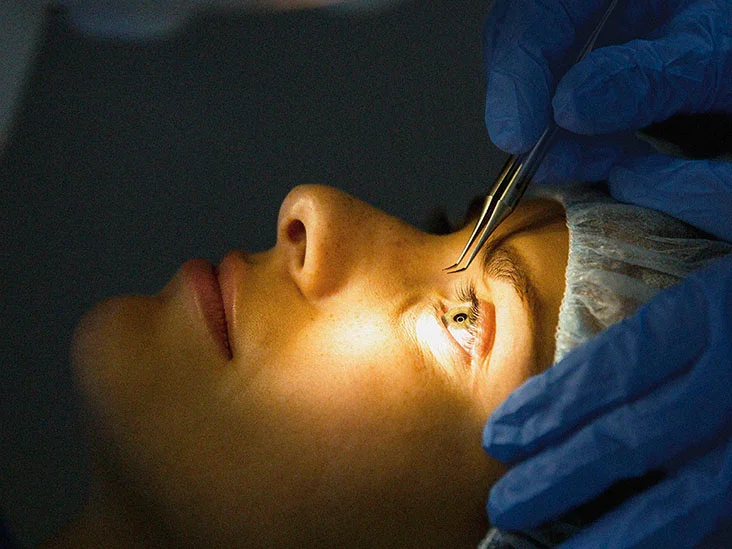An eye surgeon uses anesthetic drops to numb your eyes during this procedure. He or she then folds back a flap of cornea and uses a cool-beam laser to reshape part of it.
Once this procedure has been performed, the corneal flap must be put back in its proper place and worn under contact lens for healing purposes.
What is LASIK?
LASIK, or Laser In Situ Keratomileus Refractive Keratectomy, is an advanced surgical procedure using laser technology to correct how light hits the retina of an eye. It is often the go-to option for people suffering from myopia (nearsightedness), hyperopia (farsightedness) or astigmatism.
At LASIK, your eye surgeon will first administer anesthetic eye drops to ensure maximum comfort throughout the procedure. Next, they will create a thin protective flap on your cornea using either a microkeratome blade or non-bladed instrument known as femtosecond lasers.
Once your corneal flap has been repositioned, the laser vaporizes small areas of corneal tissue to alter its shape, all computer controlled according to your individual refractive error. Following this, shields will be placed over each eye for natural healing purposes and then the flap repositioned again.
What is PRK?
Subluxation surgery is an innovative procedure used to correct nearsightedness and astigmatism. A laser is used to modify your cornea’s shape and improve how light is refracted through your eye, producing accurate results in which most people can achieve 20/20 vision three months post surgery without glasses or contact lenses.
Your ophthalmologist will perform several eye tests and review your health history to ascertain whether PRK is suitable for you, making precise measurements of both corneal and pupillary sizes to accurately gauge potential complications from surgery.
Your ophthalmologist will first apply numbing eye drops and secure an eyelid holder to reduce blinking, before proceeding to remove the epithelium (top layer of your eye) using brushes, blades, alcohol solutions or laser. After this has been accomplished an excimer laser will reshape your cornea thus decreasing refractive errors.
What is ASA?
ASA stands for American Society of Anesthesiologists, and serves as a classification system used by anesthesiologists to better prepare for surgeries and predict risks of complications.
LASIK surgery can correct short sightedness, long sightedness and astigmatism by creating a thin flap of corneal tissue using a femtosecond laser (usually Intralase). Once created, this flap is then lifted for excimer laser reshaping of the cornea before being replaced again.
An ASA differs from traditional firewalls by remembering individual requests that enter its network, thus making Bob’s web browsing experience far more beneficial and useful. It does this by remembering each session information that comes into its system from Bob going out onto the internet – something a traditional firewall cannot do. This makes an enormous difference to his browsing experience!
What is LASEK?
As with PRK, LASEK employs alcohol solutions to loosen and detach the surface skin layer (epithelium) of the cornea from its supporting structures, before folding it to one side to allow an excimer laser to reshape deeper stromal tissues of the eye. Once surgery has been completed, epithelial layer is replaced and medicated bandage contact lenses worn for postoperative recovery are worn as aid.
Since LASEK doesn’t involve cutting the corneal nerves responsible for the tearing reflex, it may help decrease risk of dry eyes in some patients and is also an effective solution for individuals participating in activities which pose increased risk of eye trauma.
Before your LASEK eye surgery, it is imperative that you arrange for someone else to drive you home as your corneal surface will need time to heal and improve vision.
What is Monovision?
Monovision is an eye care technique where your doctor corrects your dominant eye for distance vision while leaving the non-dominant eye nearsighted, enabling you to see up close without wearing glasses while still having clear distance vision.
Eye surgeons perform a simple test to establish which eye is dominant by asking you to peer through a small opening, with each eye closed, while focusing on objects at various distances; then closing each one at a time while looking through another opening; the one which focuses closest is considered dominant.
Patients who use monovision can typically depend on their dominant eye for near vision while still driving and performing other tasks using both eyes. However, monovision does involve compromises in terms of depth perception and contrast sensitivity that must be considered when making this choice.




